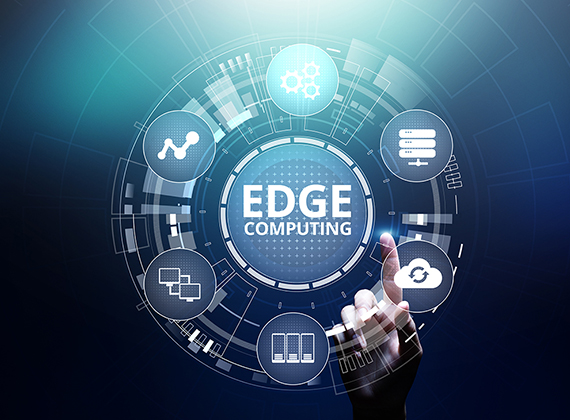What Is Edge Computing? Everything You Need to Know
Data is a critical asset to every modern business for it provides valuable insights and supports the decision-making process. With the progress in technology, a huge amount of real-time data is routinely collected through various sources. A business needs to efficiently manage this overflow of virtual data. The traditional data center facilities aren’t suitable of accommodating this inflow of data.
Businesses respond to these challenges by deploying the logical edge computing architecture. It moves the storage and computing resources from the data center to the point of data generation.
Edge computing is an information technology (IT) architecture that brings computation and data storage closer to the originating source of the data itself. This removes the dependency on a centralised location thousand miles away.
Why edge computing?
In a traditional enterprise computing setup, the data is produced at the client’s end and is then moved across a WAN where it is stored. Then, the data is worked upon by an enterprise application. Finally, the results are conveyed to the client.
Today, the data produced and the number of devices connected to the internet are rising dramatically. The traditional data centers are unable to accommodate this exponential data growth. With a majority of the data being created outside the original centralized data centers, relaying the information may take up more time. This signal latency of even 2-3 seconds can delay numerous decision-making processes and the organisation may incur losses.
The traditional approach was feasible earlier when the data load was manageable. However, the need for a change in the approach is evident in the current scenario.
How does edge computing work?
Edge computing is an alternative to the cloud environment. It runs applications as close as possible to the site where the data is being generated instead of a centralized cloud or data center or data storage location. Real-time data is processed at the ‘edge’ of the network.
It works by segregating the work into two major actions. The raw data is processed at the place of origin and doesn’t need to be transmitted to the central data center. Only the results of the computing work at the edge are transmitted to the main center for review.
Processing data at a network’s edge reduces the need for large amounts of data to travel to servers, the cloud, devices or edge locations for processing.
Edge computing vs. cloud computing
Both concepts relate to computing and focus on the computation of data. However, there exist various differences between the two approaches.
One of the major differences between them is related to the location of the computation. Edge computing deploys computing and storage resources at the location where the data is produced. Only the results are relayed to the main data center. However, in cloud computing, the computer processes take place remotely at the centralised data center.
Cloud computing is used to process data that is not time-driven. Time-sensitive data needs to be processed via edge computing as it is critical for the decision-making processes.
Connectivity issues in remote locations require edge computing solutions. This ensures that critical data is locally stored and computed. It reduces the data load to be relayed to the main data center that may be far off.
Benefits of edge computing
Edge computing architecture successfully answers critical infrastructure concerns like bandwidth limitations, excess latency and network congestion.
Numerous edge computing uses have been able to attract the attention of enterprises:
• Reduced operational cost:
With local area network being used for data processing, the load of data transfer is minimised. This reduces the requirement for costly bandwidth additions.
• Autonomy:
Edge computing is extremely useful when the connectivity is unreliable in remote locations. When the data is processed locally, the amount of data to be sent is reduced. This reduced data load requires lesser bandwidth.
• Wider reach:
Edge computing can process the data locally, even without internet access. This increases the range of computing to remote locations which were previously deemed inaccessible.
• Data sovereignty:
Sensitive data can be protected by being computed inside a local area network, equipped with a company firewall. This avoids unnecessary exposure to cybersecurity attacks.
The world of data and computing is being altered with the explosive growth of internet-connected devices. The tremendous support from 5G speed has enabled real-time applications to be created. These have enabled life-changing technological advancements. Businesses today understand the purpose of edge computing and are undergoing a tremendous shift to stay ahead of the curve. They are deploying various types of edge computing.
Edge computing is transforming the way data is being received, processed, and delivered across the globe. It is truly reshaping the IT and the business computing domain.







